Why Mercury enters retrograde — and it has nothing to do with your personality
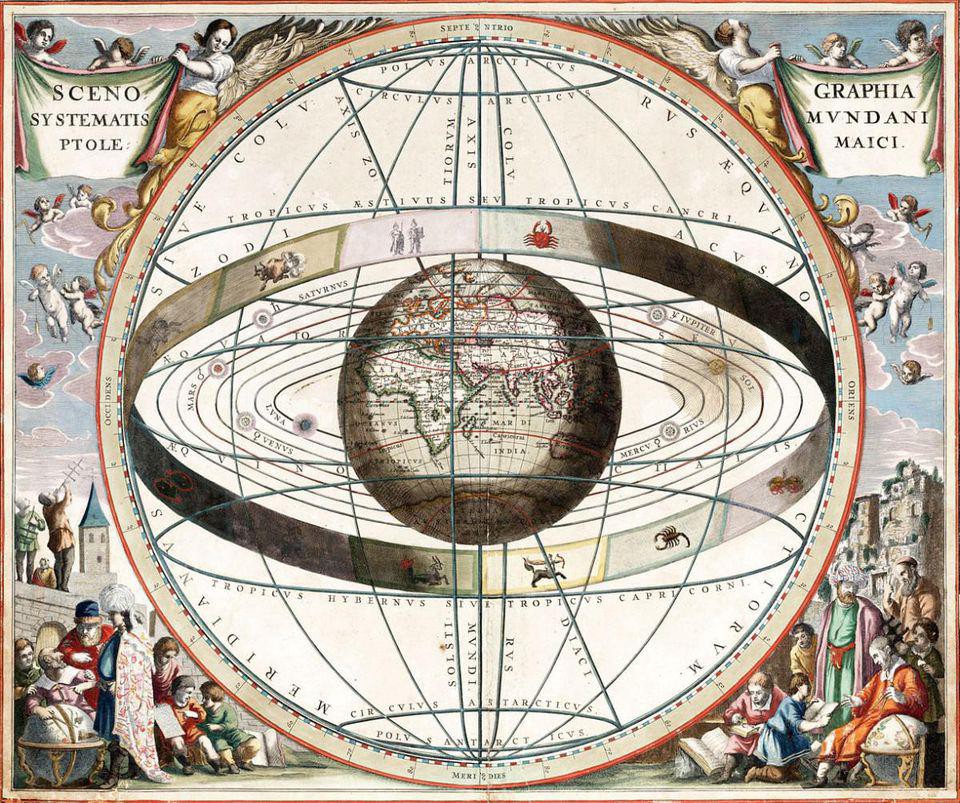
- On September 9, 2022, Mercury will enter retrograde yet again, as the planet appears to completely reverse its course through the skies.
- This phenomenon, known since antiquity, used to be explained through the simplistic and incorrect Ptolemaic theory of epicycles.
- Today, however, we understand gravitation and how objects move through the Solar System precisely. Here’s what makes Mercury’s retrograde motion so special.
Throughout almost all of the year, you can see planets migrating through Earth’s night sky in the same predictable fashion. Whereas the stars always appear in the same location relative to one another, the planets – being so close by relative to the distant stars – appear to shift from night-to-night. Most of the time, these distant worlds slowly migrate in the same direction: typically from west to east, rising and/or setting slightly later from their relative positions a day earlier.
But every once in a while, if you were to track a planet’s motion continuously over time periods lasting weeks-to-months, you’ll find that a planet suddenly slows it migration, eventually stopping entirely as it repeats its position from the previous night. Then, for the next few weeks, it actually reverses its direction in what’s known as a retrograde period, migrating in the opposite direction to its more typical motion, eventually moving to where it was weeks prior. Finally, it will slow down again, reverse its course once more, and continue on moving in its original direction: in prograde motion again.
These retrograde periods are different in duration and detail for each and every planet, but for Mercury, they’re both the shortest lived and also the most frequent. Here’s the true science behind Mercury’s retrograde period.
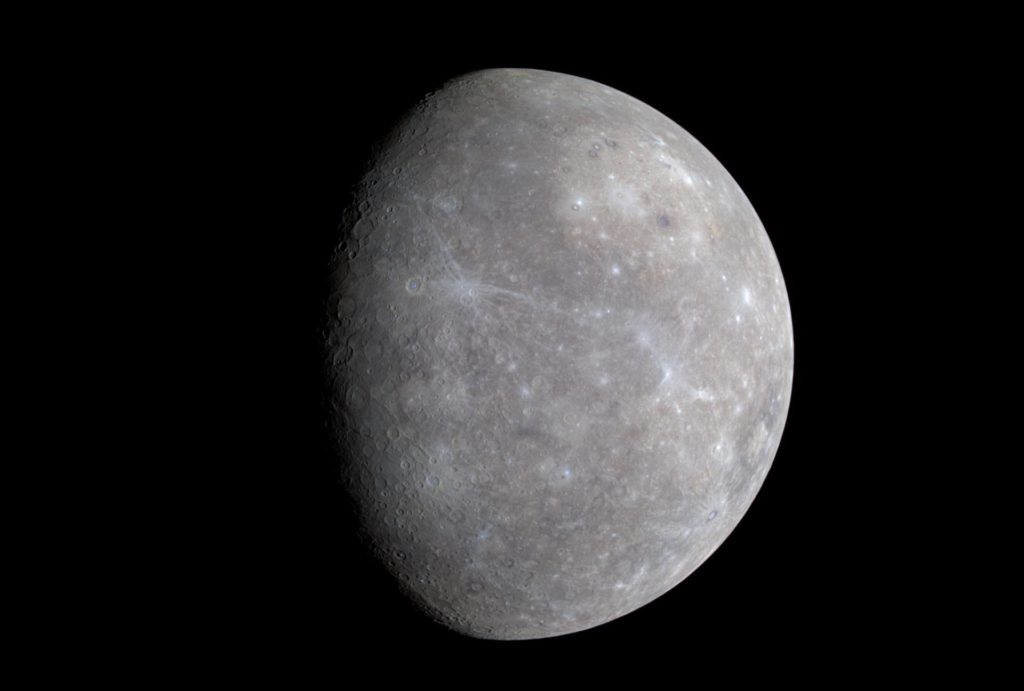
When most of the planets in the Solar System enter retrograde – including Mars, Jupiter, Saturn, Uranus and Neptune – they do so because the Earth has “caught up” to them in their orbits around the Sun. Each planet that orbits the Sun does so with its own unique properties: its own average distance from the Sun and its own average orbital speed. The fastest planets are the closest; the slowest are the most distant.
Earth orbits the Sun at an average distance of 150 million kilometers (93 million miles) and moves at about 30 km/s throughout most of the year. Mercury and Venus are both closer and faster, with Mercury averaging distances of 58 million kilometers and speeds of 47 km/s. On the other hand, all of the outer planets are more distant and slower, with Neptune as the most extreme: a distance of ~4.5 billion kilometers and speeds of just ~5 km/s. It takes more than 160 Earth-years for Neptune to complete one orbit, whereas Mercury completes more than four full revolutions around the Sun in the time it takes Earth to finish a single orbit.
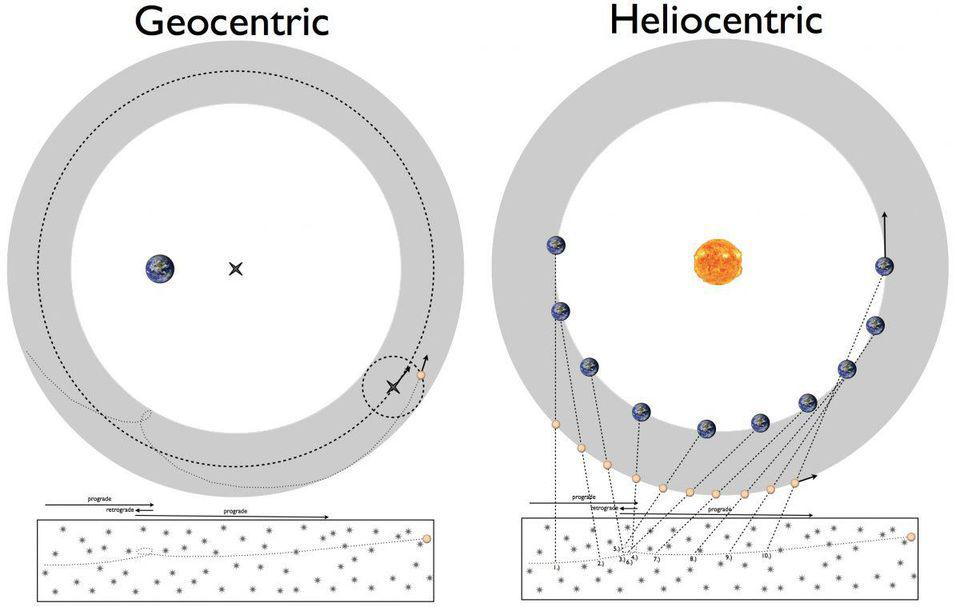
One of the most brilliant geometrical realizations in history was that the retrograde motion we observed from Earth didn’t require a planet to physically change its course, alter its speeds, and reverse directions, but rather could be explained by a simple heliocentric model. Taking Earth and Mars as examples, we know that Mars orbits farther out than Earth does, and also has a slower speed in its orbit around the Sun. As Earth moves faster along a shorter orbit, it completes a revolution in less time than Mars does, and that means, when the Earth passes between the Sun and Mars, our home world “overtakes” the red planet in orbit.
The act of overtaking a planet – just like overtaking a slower passenger car on the highway – means that the planet appears to move “backward” relative to you, even though you’re both moving forward: them more slowly than you. As Earth moves more quickly than Mars in (approximately) the same direction through space, Mars appears to reverse course to its normal west-to-east motion, instead moving east-to-west relative to the background stars. Only after a couple of months of retrograde motion does Mars then resume its prograde motion, as the Earth begins to move more perpendicularly to the motion of Mars.
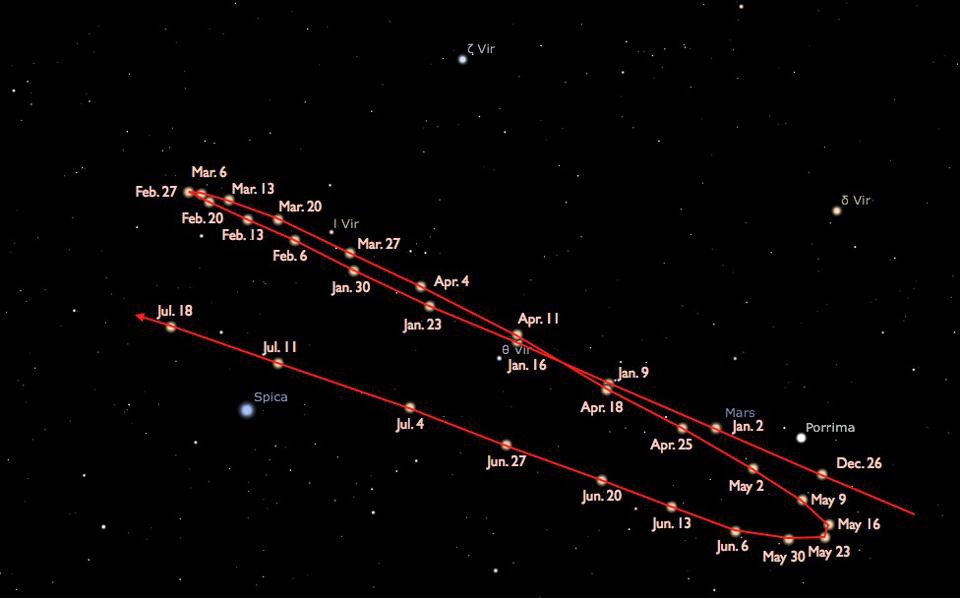
For all of the outer planets, not only does the same pattern emerge, but for the more distant planets, their prograde and retrograde motions are dominated by the Earth’s motion through the sky. Whereas Mars moves at a substantial percentage of Earth’s speed, Saturn, Uranus and Neptune all move at much lower speeds, and as a result, their apparent motion relative to the background stars is almost entirely dictated by Earth’s relative motion through the Solar System.
For the worlds that orbit more distantly from the Sun than Earth does, the same story always applies. Earth orbits the Sun more quickly at a lesser distance than the outermore planets, and as a result, each time the Earth moves to pass between a more distant planet and the Sun, the apparent motion of that planet switches: from prograde (west-to-east) to retrograde (east-to-west), until the time arrives where Earth accelerates around the Sun in a substantially different direction to allow the outer planet to move in the prograde (west-to-east) direction once again.
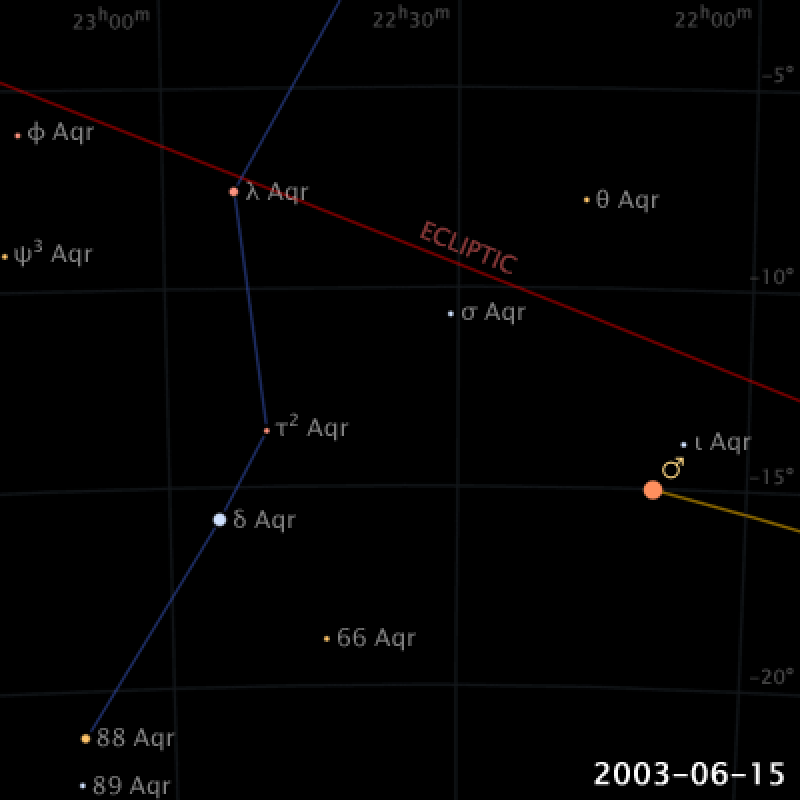
But for an inner planet, like Venus or Mercury, the opposite story unfolds. As we examine the relative motions of the Sun, Earth, and one of the innermore planets, we find that the inner planets orbit at lesser distances and greater speeds than Earth does as these worlds move around the Sun. During most of the time, Mercury and Venus move from east-to-west, where they transition from being “morning stars” (visible in the pre-dawn skies before sunrise) to being “evening stars” (visible in the post-sunset skies).
However, at some critical moment in time – which happened most recently for Mercury on August 27, 2022 – the inner planet reaches what’s known as its period of greatest elongation in the post-sunset skies: where it’s farthest from the Sun, on the west side of our parent star. Just a short amount of time later, less than two weeks in this particular instance, the inner planet begins its period of retrograde motion, where it instead moves from west-to-east. Venus and Mercury are the only planets in the Solar System, relative to Earth, where retrograde periods result in west-to-east motion.
These retrograde periods correspond to the portion of Venus’s and Mercury’s orbits where those inner planets are racing around between the Sun and the Earth, overtaking the Earth in the process. They only occur when the inner planet has a larger component of its velocity in Earth’s direction-of-motion than planet Earth itself, and that only lasts for a few weeks at a time for each of the inner planets. Mercury begins its retrograde period on September 9, 2022, and its retrograde period ends on October 1st, 2022.
Once the inner planet passes the Earth, it begins to “turn” to move around the Sun again, and retrograde ends once its velocity in Earth’s direction-of-motion drops below Earth’s speed. Still, the planet will continue to increase in its elongation for a short period of time even when prograde motion resumes. Although Mercury’s retrograde period begins on September 9, 2022, it reached its greatest evening elongation on August 27, 2022. Similarly, although its retrograde period will end on October 1, 2022, it won’t reach its maximum eastern elongation – visible in the morning skies – until October 8, 2022.
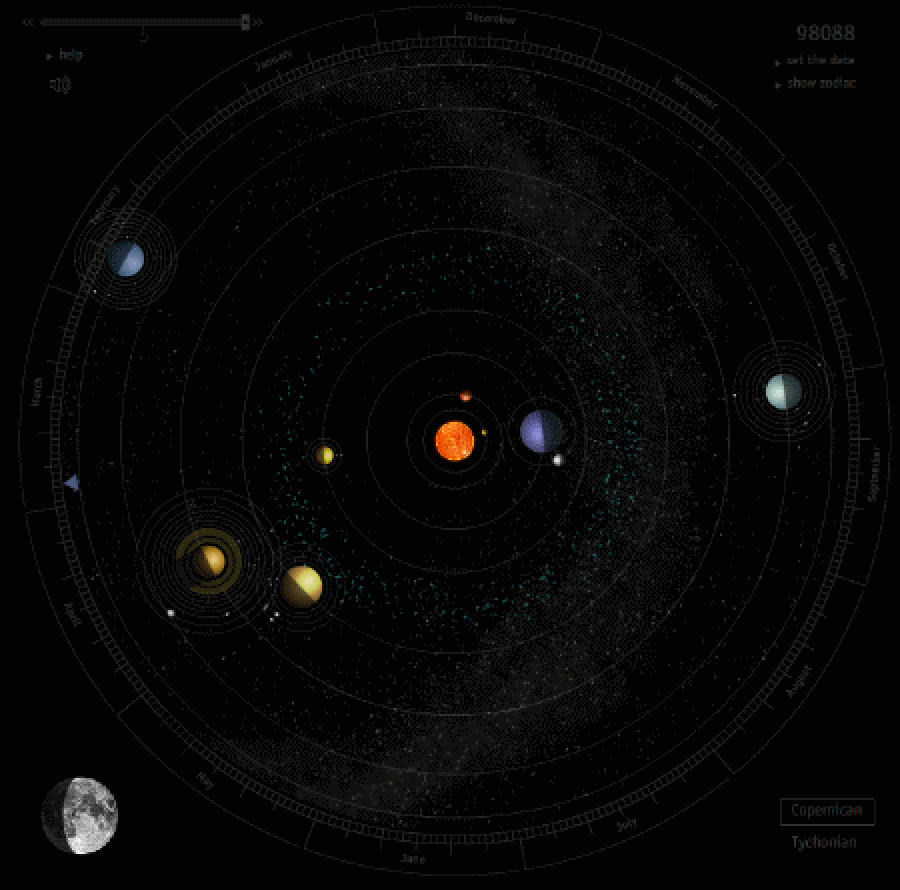
Additional retrograde periods frequently and regularly occur for Mercury, as it completes a full revolution around the Sun in only 88 Earth days: just about one-quarter of an Earth-year. Mercury’s retrograde period will recur in January of 2023, then again in May 2023, then again in September 2023 and still again in December of 2023. Three or four periods of retrograde motion for Mercury are typical in any given year; by comparison, the outer planets typically only experience one, or in the case of Mars, zero-to-one.
There will be one moment, every time an inner planet is in retrograde, where the Sun, Earth, and that inner planet come closest to making a perfectly straight line. That moment is known as “inferior conjunction,” and corresponds to the moment where an inner planet comes closest to passing directly between the imaginary line connecting the Sun and the Earth. Because the planets all orbit in slightly different planes, perfect alignments are rare. However, they do occur, and when they do, that’s when we can view the spectacular sight of a planetary transit: where an inner planet moves across the face of the Sun from Earth’s perspective!

The next inferior conjunction for Mercury will occur on September 23, 2022, with future inferior conjunctions occurring on:
- January 7, 2023,
- May 1, 2023,
- September 6, 2023,
- and December 22, 2023.
However, none of these will be planetary transits. The most recent transit of Mercury took place on November 11, 2019, and the next one won’t occur until 2032. Due to its close proximity to the Sun, its rapid orbital period, and its relatively coplanar orbit, Mercurian transits are much more common than Venusian ones.
By contrast, Venus is nearly twice as far away from the Sun as Mercury is, has a larger orbital tilt to its axis than Mercury does, and only reaches inferior conjunction with Earth once every ~19 months, instead of every 3 or 4 months for Mercury. All of these factors combine to make Venusian transits much rarer than Mercurian ones. The last transit of Venus occurred on June 5-6, 2012, but the next one won’t visit us until December 10-11 in the year 2117! The average human only gets two Venusian transits in their lifetime, and if you missed the ones in 2004 and 2012, you’d better wish for a long life if you want to see another one!

During all of its retrograde periods, however, Mercury comes closer to the Earth and exerts a greater gravitational influence on our planet than at any other time. During the next upcoming inferior conjunction, Mercury will get as close as ~96 million km to planet Earth, but some conjunctions can cut that distance all the way down to a minimum of ~82 million km, which occurred as recently as 2015. In addition, although Mercury is the smallest planet in the Solar System, it can appear as large as 10 arc-seconds, or 1/6th of an arc-minute (which itself is 1/60th of a degree) in Earth’s night sky.
Although these are fun facts, the influence that Mercury exerts on Earth – during retrograde and even during inferior conjunction – is virtually undetectable even to very careful astronomers. Just as Earth’s gravitational influence causes Mercury’s orbit to precess, Mercury’s influence causes Earth to precess as well. Unfortunately, this influence results in under 1 arc-second of precession per century: a hitherto undetectably small amount. The brightness contributions of Mercury are negligible to the overall brightness of the sky except in a narrow region, and the tidal influences of Mercury are less than one-millionth the effects of the Moon. In no measurable way does Mercury, whether in retrograde or not, affect life on Earth as far as we can tell.

Still, it’s a fascinating and very real phenomenon. Of all the planets in the Solar System, Mercury is the only one to enter retrograde more frequently than once-per-year, and a typical year will actually see either three or four periods of Mercury in retrograde motion. Whereas inner planets typically migrate from east-to-west while outer planets typically migrate from west-to-east in Earth’s night sky, this only describes their prograde motions. There are also retrograde periods where the direction reverses, meaning that while Mars, Jupiter, Saturn, Uranus and Neptune all move east-to-west during retrograde, Mercury actually moves west-to-east during those retrograde periods.
Most people, when they talk about Mercury entering retrograde, do so in astrological terms: wondering (or, perhaps more accurately, worrying) what sort of implications it will have for their lives on Earth. While it’s unclear whether any perceived effects are anything more than confirmation bias on the part of the observer, the astrophysics enables us to quantify how it affects us in every scientific way imaginable: gravitationally, tidally, and visually. If you catch Mercury migrating rapidly from night-to-night across the sky over the next few weeks, you’ll now know precisely the astrophysical reason why!




